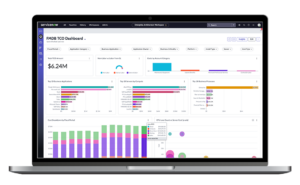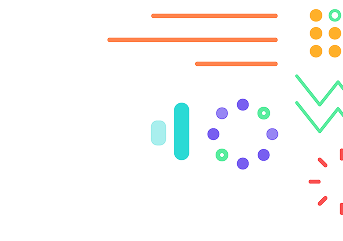Why Modern TBM Must Evolve to Embrace the Convergence of Two Powerful Disciplines
For much of the past decade, Technology Business Management (TBM) and FinOps have lived in parallel worlds. TBM served enterprise IT leaders and finance teams as a structured framework for understanding, managing, and optimizing the full spectrum of technology investments. FinOps emerged from the cloud era—a more tactical, bottom-up approach to controlling the explosive growth of infrastructure-as-a-service costs.
They weren’t in competition. They were two sides of the same coin, solving different parts of the IT financial challenge. In fact, organizations were often encouraged to adopt both: TBM to guide strategy and governance, and FinOps to execute cloud cost control with agility and precision. This sentiment was even formalized in a joint white paper from the TBM Council and the FinOps Foundation, emphasizing complementarity rather than conflict.
But times change. And this year, the equilibrium shifted.

At the FinOps X 2025 conference, the FinOps Foundation made it clear: FinOps is no longer just about cloud. With the introduction of its new “Scopes” framework, FinOps is expanding its reach to encompass on-prem infrastructure, SaaS, AI workloads, and even labor. The new language coming out of the community is bold—FinOps wants to become the operating model for all IT spend. In other words, FinOps is coming for TBM.
From Complementary Practices to Overlapping Mandates
This evolution has been years in the making. As cloud spend ballooned into a primary cost center, FinOps moved from a niche practice to a board-level priority. The practice’s fast-feedback loops, real-time optimization, and team-driven accountability models found traction well beyond the DevOps crowd. CFOs started paying attention. CIOs started staffing FinOps teams. And cloud financial management matured from tagging policies and budget alerts to a full-fledged discipline.
It was only a matter of time before the question arose: If FinOps works for cloud, why not everything else?
That question has now become a mission. The FinOps Foundation’s new framework doesn’t just allow for multiple technology spend categories—it encourages organizations to adopt FinOps principles for managing everything from physical infrastructure to AI/ML, software licenses, and personnel costs. “Cloud cost optimization” is being rebranded as “technology value optimization.”
That’s a powerful idea. But it’s also a clear encroachment on TBM’s turf.
Why Organizations Are Ready for Convergence
To be clear, this isn’t about labels. Whether the function is called TBM, ITFM, FinOps, or some combination of all three, the objective is the same: continuously optimize technology investments and maximize value delivered to the business. If ITFM and TBM had successfully solved this problem already, FinOps wouldn’t even be thinking about moving in this direction. In that respect, the push from FinOps to expand its charter is not only understandable—it’s inevitable.

We now live in a world where:
- Every business is a digital business.
- Technology spend is no longer centralized in IT.
- Cloud, SaaS, and AI adoption is compounding the complexity of cost allocation.
- Value realization is expected—not assumed.
Traditional TBM offered the financial rigor and cross-functional alignment enterprises needed to navigate this landscape. FinOps brought agility, automation, and real-time accountability. What organizations need today is not one or the other—but both, deeply integrated into a single, modern framework.
The Limits of Going It Alone
But integration requires honesty about the limitations of both approaches as they exist today.
Legacy TBM, often built around inflexible taxonomies and generalized allocation models, has struggled to adapt to modern architectures and agile product teams. The very standardization that once made TBM scalable has become an anchor in an era that demands configurability and speed. Without the ability to flex around how different parts of the business define value and cost responsibility, TBM risks becoming a governance tool that’s only marginally useful to operators and product owners.
But FinOps, too, faces headwinds as it scales beyond cloud.
As the practice extends into new domains like AI and SaaS, it enters territory where the line between cost and value becomes far blurrier. Unit economics aren’t always measurable. Cost drivers are more complex. Organizational accountability is harder to define. If FinOps tries to enforce a rigid taxonomy or adopt a one-size-fits-all maturity model—just as some legacy TBM implementations did—it could hit the same wall: good at managing slices of spend, but disconnected from strategy.
That’s why the convergence of FinOps and TBM isn’t a land grab. It’s a test. Can these two disciplines come together to deliver something better than either could on its own?
Modern TBM: The Framework for What Comes Next
At Nicus, we believe the answer is yes—but only if organizations embrace a Modern TBM approach that isn’t tied to the past. Modern TBM must preserve what made both disciplines valuable while shedding what made them brittle.
That means a few things:
- Flexible, decision-aligned modeling
Cost structures should reflect how your business operates—not how a tool vendor defines categories. Whether you’re allocating costs by product line, business unit, geography, or shared service, the model must be yours. Not only does this ensure internal alignment—it also allows you to pivot seamlessly into external frameworks (like Gartner or IDC) when benchmarking is required. - Real-time and retrospective visibility
Strategic planning doesn’t have to be slow. And real-time optimization doesn’t have to be shallow. Modern TBM must blend the financial integrity of ITFM with the speed of FinOps, offering insights that serve both quarterly forecasts and hourly decisions. - Cross-domain reach
Modern TBM must extend beyond the boundaries of IT—supporting the full landscape of technology spend: cloud, on-prem, SaaS, AI, labor, embedded technology in products and when the technology IS the product. That includes cloud cost data from FinOps scopes and structured financials from ERP systems—all unified in one platform. - AI-powered optimization
Where FinOps has led with automation, TBM can follow. Modern TBM must harness AI to move from dashboards to decisions—proactively surfacing optimization opportunities, forecasting value, and even taking action when possible. This is how organizations evolve from cost control to value creation. It’s also essential because if we’re being honest, very few people have an MBA in finance and the ability to deeply understand technology. AI can be the bridge that democratizes the data and the insights to drive decisions and action.
FinOps and TBM Can—and Should—Work Together
The idea that TBM and FinOps are at odds is short-sighted. In fact, at Nicus, we’ve long argued that these practices are strongest when paired. In our blog series, ITFM vs FinOps, we explored how the two disciplines address different parts of the technology value chain. FinOps excels at operational cost control, TBM at long-term alignment and financial stewardship. Used together, they create a closed loop of optimization and accountability.
That remains true—perhaps more than ever. What’s changed is the landscape.
FinOps is growing up. TBM must modernize. And organizations need a platform that supports the full spectrum of use cases across finance, engineering, IT operations, product management, and the executive suite.
That’s why we built Modern TBM natively on ServiceNow. It’s a platform designed not just to track costs, but to tell the story of how technology powers your business—continuously, collaboratively, and in real time.
The Future Isn’t FinOps or TBM. It’s Integration

We’re not heading for a turf war. We’re heading for a transformation.
- FinOps is expanding its reach to reflect the new reality of decentralized, domain-driven tech spend.
- TBM must meet that moment with a more adaptable, intelligent, and value-centric model.
- And organizations must reject false choices between agility and governance, speed and structure, FinOps and TBM.
This is the age of convergence. And it’s time to stop choosing sides—and start building bridges.
If you’re ready to explore how Nicus Modern TBM can help you unify your FinOps and TBM strategy—without compromise—we’d love to talk.







